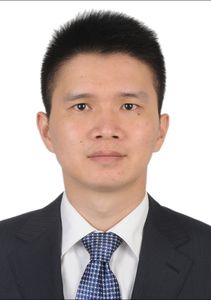On April 23, three warships—the Changzheng-18, the Dalian, and the Hainan—were commissioned into the People’s Liberation Army (PLA) Navy. The combined displacement of these vessels might be larger than that of entire navies of some countries, but it did not arouse much discussion. Partial reasons include the increasing international recognition for the PLA’s strength and the fact that its defence build-up plan is under constant scrutiny.
People have good reason to keep a close watch on the PLA as US President Joe Biden has declared “extreme competition” with China, and the negotiation for de-escalation on the Sino-India border is stalled. For the past decade, Indian strategists, scholars and diplomats have often falsely accused China of adopting an aggressive and assertive attitude towards India. They usually sharpen their criticism when the PLA enhances its military position or announces military modernisation goals.
A three-step modernisation process covers the PLA’s goals on mechanisation (JiXie Hua), informatisation (XinXi Hua), and building a world-class force. It is the last and most recent goal that is arousing international concerns. Recent remarks by Senior Colonel Ren Guoqiang, the spokesperson for China’s ministry of national defence, can offer some clue that a “world-class force” does not necessarily mean exceeding the US but realising the goal of ‘intelligentisation’ (ZhiNeng Hua, that involves using artificial intelligence for military planning). This goal has been in the official statement for long.
China’s main challenge comes from the US, and its grand strategy vis-à-vis the US will have inevitable security implications for India. Nevertheless, its military posture demonstrates continuity and consistency. And, despite the confrontational relationship with the US, the Communist Party of China (CPC) leadership is in agreement that the strategic focus should be on China’s development. An actual reading of 2027 Goals can find that it is not a guidebook for speedy war preparedness. Also, China’s plans on military modernisation and reforms are in step with the country’s modernisation process.
Also read
- Ladakh standoff exposed PLA's weaknesses, made China rejig security narrative
- These men ensure PLA is unlikely to quickly forget the Indian warriors in Galwan
- We are in a new cold war, says former US general Robert S. Spalding
- Indian military needs new doctrinal thinking, writes retired Lt Gen D.S. Hooda
- India needs a dedicated mountain strike corps to tackle China
- Unified theatre command: Why Army and Navy support it, while Air Force is hesitant
The centenary goals also demonstrate that the CPC leadership is looking at China’s military strength from the point of preparedness on military theory and doctrines rather than war.
President Xi Jinping is in a favourable position to initiate tough organisational reforms and to force structural adjustments. There is a key problem in India’s China studies—it lacks accurate understanding of Chinese history and culture. China’s India strategy can be understood in two parallel ways: First, China is not a superpower candidate at all if it cannot face the challenge on the west frontier; second, China cannot be a superpower if it only indulges in competitive and malicious fights with India. Chinese strategic culture reminds its people to “try peaceful means before resorting to force [Xian Li Hou Bing]”.
Our Indian counterparts are more willing to see the Chinese insistence on peaceful means as a point of weakness that should be taken advantage of. Meanwhile, our US counterparts see “resorting to force” as a statement aimed at the US. Neither of these interpretations should generate misunderstanding and thus ignite unwanted overreactions.
Xie Chao is assistant professor at the Institute for International and Area Studies, Tsinghua University, Beijing.


